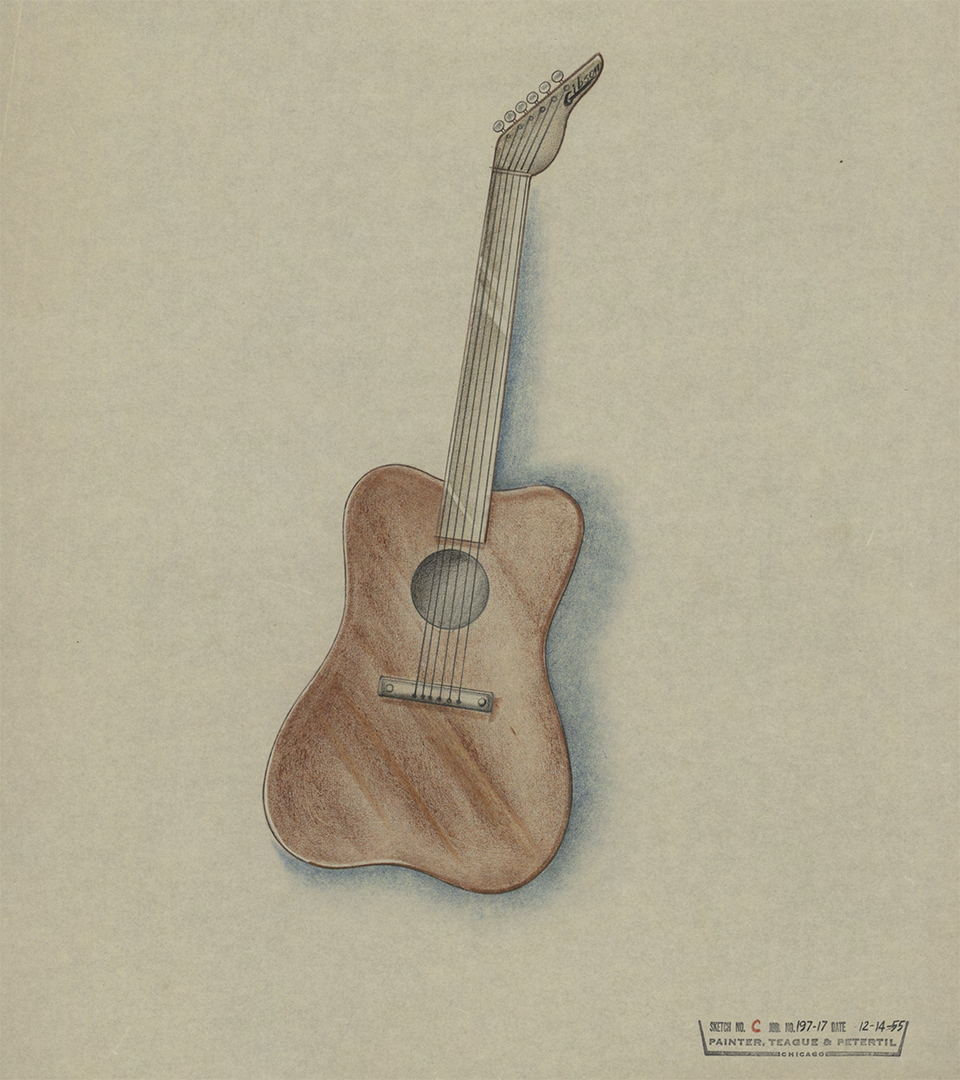“I think there were actually two paths. One was the wild pointy-shape things. The other was what I believe led to the 335”: The 1955 ‘missing link’ guitar designs that offer intriguing clues to Gibson’s Golden Era developments
The images inspired the recent production of the Theodore solidbody, but could also fill some crucial gaps when it comes to our knowledge of Gibson’s 1950s R&D process

Gibson has shared a series of previously unpublished sketches from the 1950s that have altered guitar historians’ understanding of the development of models like the Explorer and Flying V. They also, potentially, offer a clue to the evolution of the ES-335.
The images were rediscovered by Gibson’s in-house history buffs, VP of Product Mat Koehler and Director of Product Development and Gibson Archives Curator Jason Davidson, and seemingly led to the development of the recently released Theodore model.
The sketches are thought to have been created in conjunction with Chicago design firm Painter Teague & Petertil (PTP) in 1955 at the behest of the firm’s golden-era CEO Ted McCarty.
Koehler tells Reverb that he first saw some of the sketches in Walter Carter’s reference book Gibson Guitars: 100 Years Of An American Icon.
“Rediscovering the drawings in Walter’s book prompted a search through Gibson’s archives to see if they were still there,” says Koehler, who notes it was Davidson that eventually found them.
“That was the first time we understood when the drawings were made. They’re dated November 14th 1955, and that just blew us away.”





The year is significant because the sketches contain images of an Explorer-like headstock that predate the launch of that model by some three years. You can also see what are likely early concepts for shapes like the Moderne.
All the latest guitar news, interviews, lessons, reviews, deals and more, direct to your inbox!
In addition, Koehler believes that the predominance of thinline designs among the sketches is evidence that the firm’s iconic ES-335 (announced in 1958) was being conceived alongside the Modernistic lines as far back as ’55.

“Those wacky designs, I think came all around the same time, for a few years, where Gibson was trying to get to what became the Modernistic guitars, the Explorer and Flying V,” Koehler tells Reverb.
“But I think there were actually two paths. One was the wild pointy-shape things. The other path was what I believe led to the 335.”

One final aspect of these designs that seems to have gone unmentioned so far is the similarity of some of the headstock sketches to Gibson’s unreleased ‘headless’ Futura prototype.
That model arrived some 26 years later and was thought to be mere myth until Gibson’s Mark Agnesi found an example in storage at Gibson.
Notably, the 'headless' Futura was developed around the same time as the 1980 Moderne reissue. The original Moderne debuted during the McCarty era (at the same NAMM show as the Flying V and Explorer) but was soon canned after it got a poor reception.
However, it seems feasible that when Gibson returned to the design in the early ’80s, it may also have taken the Futura headstock from the same point of inspiration, possibly these same 1950s drawings.
Furthermore, the model name Futura was also used on an unreleased 1957 Gibson prototype, so we know the design team of the era was clearly exploring the McCarty era archives.
Who knows? It may be mere coincidence but there’s definitely more than a passing similarity to GW’s eyes...
You can read the full interview with Koehler – penned by our own go-to guitar historian, Tony Bacon – over at Reverb.

Matt is Deputy Editor for GuitarWorld.com. Before that he spent 10 years as a freelance music journalist, interviewing artists for the likes of Total Guitar, Guitarist, Guitar World, MusicRadar, NME.com, DJ Mag and Electronic Sound. In 2020, he launched CreativeMoney.co.uk, which aims to share the ideas that make creative lifestyles more sustainable. He plays guitar, but should not be allowed near your delay pedals.
